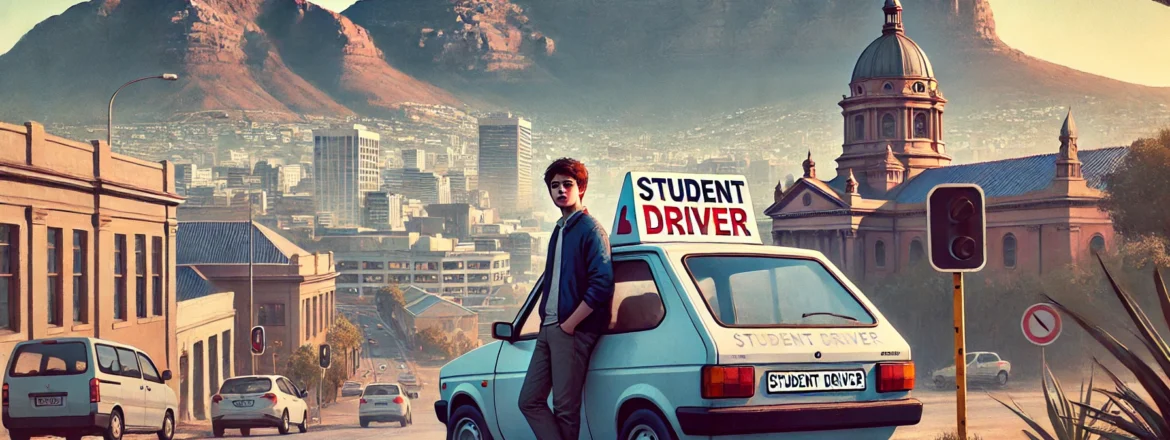Navigating heavy traffic in Cape Town can feel overwhelming for new drivers. Learning how to handle these situations is an important step in becoming a confident and safe driver. This guide offers practical tips and strategies to help new drivers, including insights into driving schools in Cape Town and the importance of proper training for tackling high-traffic areas.
Table of Contents
- Why Traffic is Challenging for New Drivers
- Understanding Cape Town’s Traffic Patterns
- Essential Tips for Handling Heavy Traffic
- Benefits of Drivers Education in Cape Town
- K53 Tips for Driving in Traffic
- Manual vs. Automatic in Heavy Traffic
- Frequently Asked Questions
Why Traffic is Challenging for New Drivers
Heavy traffic can be intimidating for new drivers due to the high volume of vehicles, constant stopping and starting, and the need for quick decision-making. Inexperience can make it harder to stay calm, maintain focus, and avoid mistakes.
New drivers often struggle with common challenges, including:
- Managing clutch control in manual cars.
- Judging safe following distances.
- Dealing with impatient drivers.
- Navigating busy intersections.
This is where proper drivers education, including K53 training, can make a huge difference.
Understanding Cape Town’s Traffic Patterns
Cape Town is known for its scenic roads and bustling streets. However, peak-hour traffic can be a nightmare for drivers. Knowing the busiest times and areas can help you plan better.
Peak Traffic Times in Cape Town:
- Morning Rush Hour: 6:30 AM – 9:00 AM.
- Evening Rush Hour: 4:30 PM – 7:00 PM.
Traffic Hotspots:
- N1 Highway: Commonly congested during peak hours.
- CBD (Central Business District): High traffic due to office workers and tourists.
- R300 Interchange: A busy route connecting major highways.
To avoid unnecessary stress, try alternative routes or drive during off-peak times whenever possible.
Essential Tips for Handling Heavy Traffic
1. Stay Calm and Focused
Remaining calm is crucial in traffic. Deep breaths and steady focus can help you avoid panicking.
2. Maintain a Safe Following Distance
Keep a minimum of two to three seconds behind the car ahead to allow enough time to react.
3. Use the Clutch and Gears Correctly
For those learning with a manual car, clutch control is key. If you’re struggling, consider taking manual driving lessons at a trusted school like iDriving School.
4. Watch for Pedestrians and Cyclists
Cape Town’s roads often include pedestrians and cyclists, especially in busy areas. Always check your blind spots.
5. Plan Your Route in Advance
Using navigation apps like Google Maps can help you avoid congested areas.
6. Stay in Your Lane
Lane switching in heavy traffic increases the risk of accidents. Stick to your lane unless it’s necessary to change.
7. Avoid Distractions
Keep your attention on the road by putting your phone away and focusing on your surroundings.
Benefits of Drivers Education in Cape Town
Attending a driving school is one of the best ways to prepare for traffic challenges. Local schools like iDriving School in Cape Town offer comprehensive training, including:
- K53 Training: This ensures you learn safe driving habits and traffic rules.
- Practical Lessons: You’ll practice in real traffic situations.
- Experienced Instructors: Get guidance from patient and qualified professionals, including options for a female driving instructor near me for learners who prefer it.
K53 Tips for Driving in Traffic
The K53 system teaches drivers essential techniques for handling busy roads. Here are some K53-specific tips:
- Observation Is Key
Check mirrors and blind spots constantly, especially in traffic. - Clutch Control in Stop-and-Go Traffic
Practice smooth clutch handling to avoid stalling, especially on inclines. - Indicate Early
Use your indicators to signal lane changes or turns well in advance. - Defensive Driving
Always anticipate other drivers’ actions and be prepared to react.
Manual vs. Automatic in Heavy Traffic
If you’re considering which type of car is better for traffic, here’s a comparison:
| Feature | Manual | Automatic |
|---|---|---|
| Traffic Handling | Requires frequent clutch use. | Easier with no clutch control. |
| Learning Curve | Steeper learning curve. | Beginner-friendly. |
| Driving Lessons Price | Usually cheaper for manual. | Slightly higher for automatic. |
Many new drivers opt for manual car lessons to obtain a versatile driver’s license. However, automatic cars are easier for heavy traffic.
Frequently Asked Questions
1. What are the best times to avoid traffic in Cape Town?
The best times are between 10:00 AM and 3:00 PM on weekdays, and early mornings on weekends.
2. Can driving schools help me with traffic-specific training?
Yes, driving schools like iDriving School offer traffic-specific lessons to prepare you for busy roads.
3. Should I learn with a manual or automatic car?
This depends on your long-term needs. Manual lessons prepare you for both car types, while automatic is easier for heavy traffic.
4. How do I handle aggressive drivers in traffic?
Stay calm, avoid eye contact, and don’t retaliate. Focus on your own driving and safety.
5. Are there affordable driving schools in Cape Town?
Yes, iDriving School offers competitive driving lessons prices for both manual and automatic cars.
Conclusion
Learning to handle heavy traffic in Cape Town is a crucial skill for new drivers. With proper preparation, such as attending a reputable driving school and practicing defensive driving techniques, you can navigate busy roads confidently. Focus on staying calm, following traffic rules, and building your skills with K53 principles.
If you’re looking for a driving school near me to help you prepare, iDriving School offers personalized lessons, experienced instructors, and comprehensive training to help you pass your K53 exam and handle real-world traffic challenges with ease.


